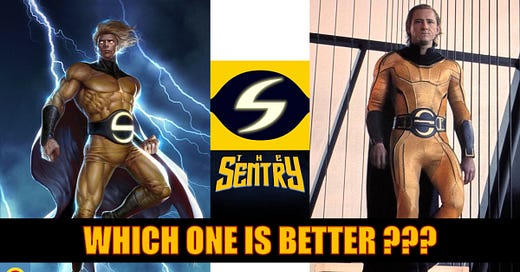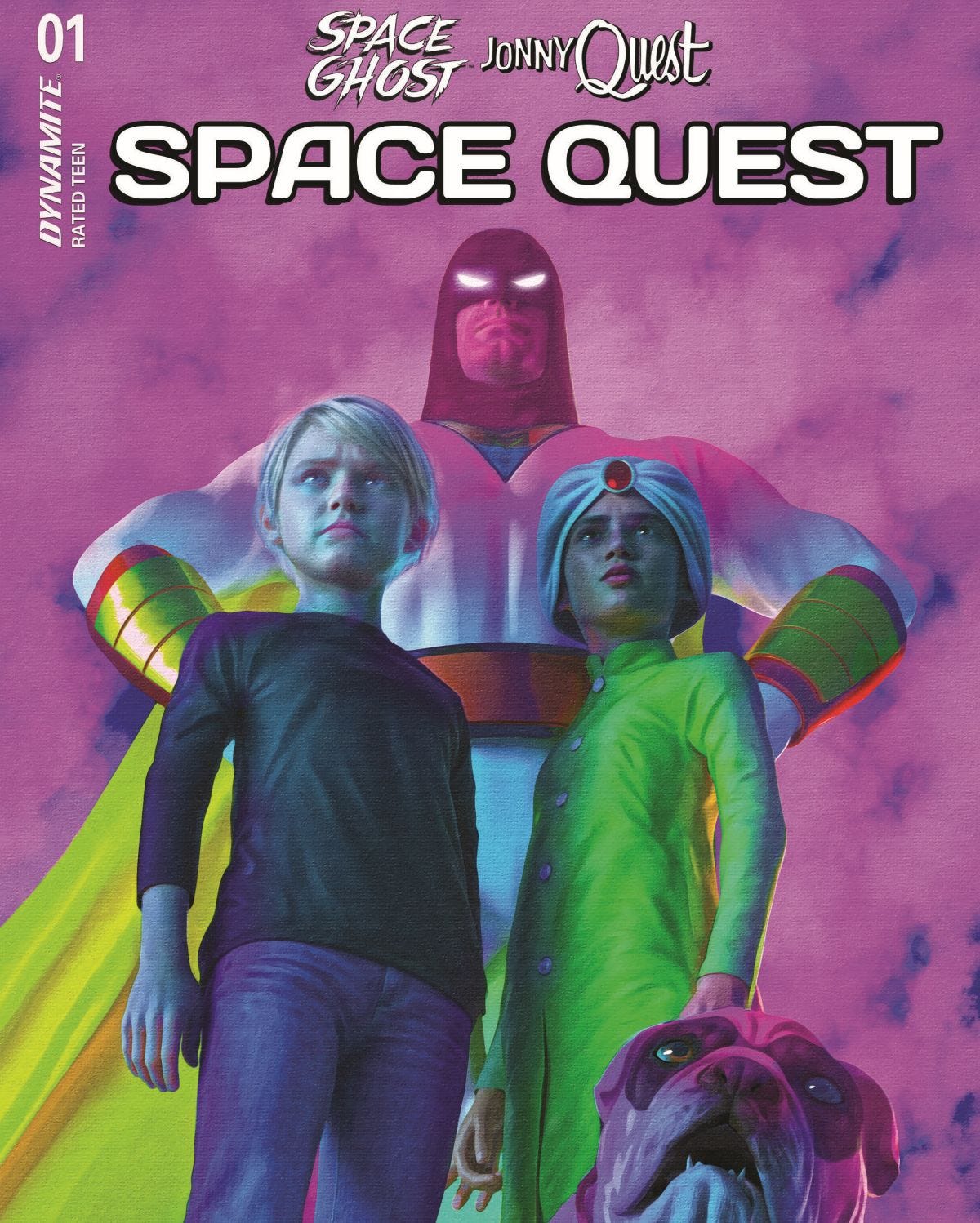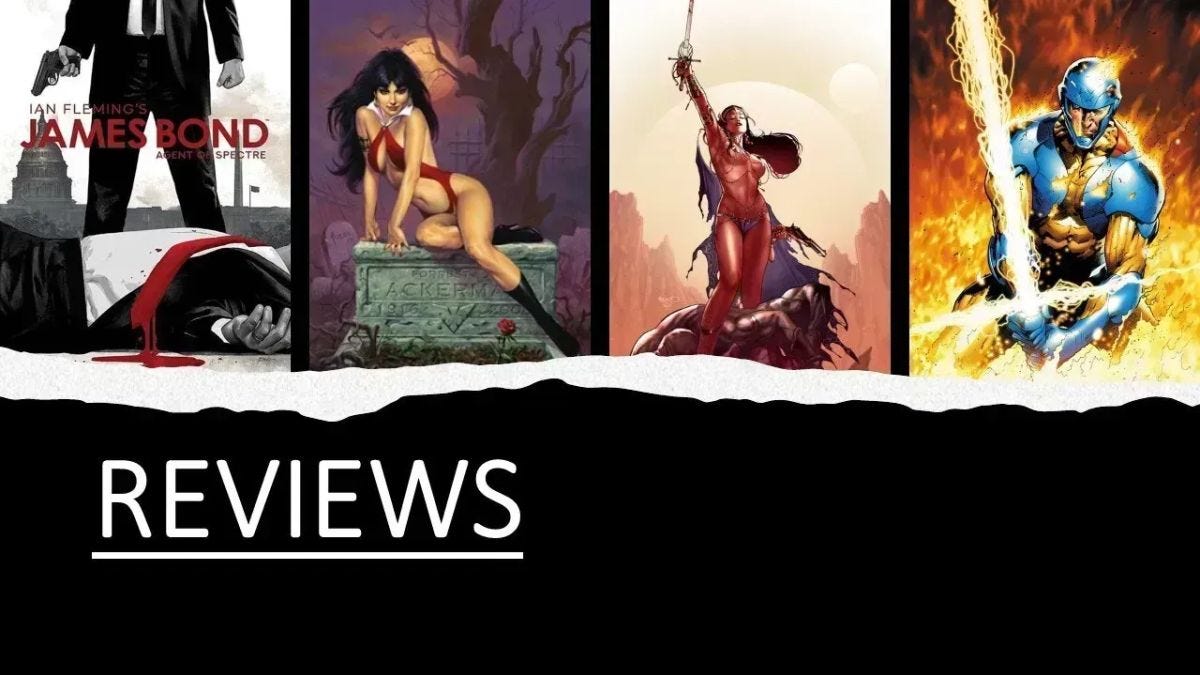Good morning, my friend,
With Sentry’s explosive debut in the Marvel Cinematic Universe’s Thunderbolts (2025), fans are buzzing about how this powerhouse measures up to his comic book counterpart. Created by Paul Jenkins and Jay Lee in Sentry #1 (September 2000), Robert Reynolds, aka Sentry, is one of Marvel’s most complex and powerful heroes, often dubbed the “Marvel Superman.”
How does the cinematic Sentry stack up against the comic version? Let’s dive into the key differences between the two, exploring their origins, powers, personalities, and narrative roles, before concluding which takes the title.
Origin Story: A Tale of Serum and Sacrifice
Comics: In the comics, Sentry’s origin is a poignant blend of Silver Age nostalgia and psychological depth. Robert Reynolds, a troubled everyman, stumbles upon a secret super-soldier serum variant as a young man, granting him “the power of a million exploding suns.” This transformative moment, depicted in Sentry #1, is both a blessing and a curse. The serum amplifies his repressed dark side, birthing the Void, an evil persona that threatens the world. To contain the Void, Sentry and heroes like Reed Richards and Doctor Strange use a device called the Sentry Watchtower to erase his existence from collective memory, including his own. This self-imposed oblivion, coupled with his struggle to reclaim his identity, sets the stage for a tragic hero narrative. The comics weave a retro-styled origin with modern psychological stakes, emphasizing Robert’s internal battle and the cost of his heroism.
MCU: The Thunderbolts* version of Sentry, while retaining the super-soldier serum origin, streamlines the narrative for cinematic impact. Robert Reynolds is introduced as a former hero who vanished after a catastrophic event tied to his unstable powers. The Void is reimagined as a manifestation of his unchecked energy rather than a distinct evil persona, reducing the psychological complexity. The MCU sidesteps the memory-erasure plotline, instead portraying Sentry as a recluse manipulated by the Thunderbolts’ leader, Valentina Allegra de Fontaine, to harness his power for her agenda. This origin focuses on external conflict and spectacle, aligning with the MCU’s action-driven storytelling.
Key Difference: The comics’ origin is introspective, rooted in Robert’s mental struggle and the metaphysical stakes of the Void, while the MCU opts for a more straightforward, action-oriented backstory. The comic’s memory-erasure twist adds a layer of tragedy absent in the film, where Sentry’s isolation feels more plot-driven than character-driven.
Powers and Abilities: Godlike Might Meets Cinematic Restraint
Comics: Sentry’s comic book powers are godlike, making him one of Marvel’s heaviest hitters. Beyond superhuman strength, speed, flight, and invulnerability, he wields energy projection, telekinesis, telepathy, a healing factor, and molecular manipulation—capabilities that let him defeat Molecule Man and solo Asgard in Dark Avengers. His solar radiation absorption fuels his “million exploding suns” moniker, but the Void amplifies his destructive potential, often surpassing Sentry’s own power. This duality makes him both a savior and a potential apocalypse, as seen in battles like his clash with Hulk in World War Hulk, where their fight scorches Manhattan.
MCU: In Thunderbolts*, Sentry’s powers are dialed back for narrative balance. He retains super strength, flight, invulnerability, telekinesis, and energy projection, with visual effects emphasizing his solar-powered glow. However, telepathy and molecular manipulation are absent, likely to avoid overshadowing teammates like Yelena Belova or Red Guardian. The Void’s manifestation is depicted as chaotic energy conversion rather than a sentient entity, reducing its narrative weight. His standout moment—a climactic battle against a rival Thunderbolt—showcases his might but lacks the comic’s cosmic scale.
Key Difference: The comics portray Sentry as a near-omnipotent force with a dangerous alter ego, while the MCU reins in his abilities to fit an ensemble dynamic, sacrificing some of his mythic stature. The Void’s diminished role in the film further limits the exploration of Sentry’s full potential.
Personality and Themes: Hero or Hazard?
Comics: Robert Reynolds is a deeply flawed, relatable figure in the comics. His struggle with mental health, guilt, and the Void’s influence paints him as a tragic hero. Stories like the 2000 Sentry miniseries and the 2018 Sentry series by Jeff Lemire delve into his desire for normalcy and fear of his own power. His interactions with heroes like Spider-Man and Hulk reveal a man yearning for connection, yet haunted by the possibility of becoming the Void. The comics explore themes of identity, responsibility, and the psychological toll of godlike power, making Sentry a compelling study in duality.
MCU: The cinematic Sentry is more stoic and less introspective. Portrayed as a reluctant hero, his personality leans into brooding isolation, with minimal exploration of his inner turmoil. The film emphasizes his role as a volatile weapon, with Valentina exploiting his instability. While there are hints of his comic book vulnerability—particularly in a quiet scene with Yelena—the MCU prioritizes his function within the team over deep character development. Themes of control and redemption are present but overshadowed by the film’s heist-like plot.
Key Difference: The comics’ Sentry is a psychologically rich character defined by his internal conflict, while the MCU’s version is a more archetypal reluctant hero, with less focus on his psyche. The film’s ensemble format limits the depth that makes the comic Sentry so compelling.
Narrative Role: Lone Guardian vs. Team Player
Comics: Sentry often operates as a lone guardian or a pivotal force in team stories like New Avengers and Dark Avengers. His presence raises the stakes, whether he’s saving the world or risking its destruction. Arcs like World War Hulk and Siege highlight his ability to shift the tide of battle, but his instability makes him a wildcard. The comics use him sparingly, preserving his mystique as a near-mythical figure.
MCU: In Thunderbolts, Sentry is a key member of an antihero team, serving as the group’s muscle. His role is to provide spectacle and advance the plot, often at the expense of his individual arc. The film integrates him into a dysfunctional team dynamic, which dilutes his mythic status but adds camaraderie absent in the comics.
Key Difference: The comics cast Sentry as a solitary, larger-than-life figure, while the MCU makes him a team player, grounding his presence in a group context. This shift sacrifices some of his enigmatic allure.
Which Is Better?
Choosing between the comic and MCU Sentry depends on what you value. The comic version, with its rich psychological depth, cosmic power, and tragic narrative, is a masterclass in character complexity. Stories like the 2000 Sentry miniseries and World War Hulk showcase his ability to carry profound, high-stakes tales that resonate emotionally and philosophically. The Void’s integration as his dark mirror elevates him beyond a typical superhero, making him a standout in Marvel’s roster.
The MCU Sentry, while visually stunning and well-acted, feels constrained by the Thunderbolts ensemble format. His streamlined origin and reduced powers make him more accessible but less awe-inspiring. The film’s focus on action over introspection limits his emotional impact, leaving fans wanting more of the complexity that defines his comic counterpart.
Verdict: The comic book Sentry reigns supreme. His intricate blend of power, tragedy, and psychological nuance outshines the MCU’s more conventional take. For fans craving a deeper dive, check out the 2000 Sentry series by Paul Jenkins or the 2018 run by Jeff Lemire. As the MCU expands, here’s hoping future appearances tap into the full potential of this golden guardian.
-Gabe
Next, our Pick of the Week for the most entertaining comic is…
Space Ghost/Jonny Quest: Spacequest #1
If you’re a subscriber to our podcast, the audio version of this review is already live. If you’re not a subscriber, we host our feed on multiple podcast platforms for your convenience.
Also, if you’d rather listen right here on Substack, make sure to subscribe to this newsletter to get the notification for the next episode.
Now, let’s get on to this week’s reviews (and a little catch-up)
G.I. JOE: A REAL AMERICAN HERO #316 – Review
[Pick of the Week] SPACE GHOST/JONNY QUEST: SPACEQUEST #1 – Review
RED SONJA ATTACKS MARS #2 – Review
ULTIMATE WOLVERINE #5 - Review
Did you see a comic review for a title you didn’t know existed?
Did you see a comic review for a title a friend should hear about?
Tell your friends by clicking on the ‘Share’ button below!
Transformers #20 (Image Comics)
Invincible Universe: Battle Beast #1 (Image Comics)
Huck: Big Bad World #1 (Dark Horse Comics)
Geiger #14 (Image Comics)
Spawn #364 (Image Comics)
Space Ghost #12 (Dynamite Comics)
Flash Gordon #9 (Mad Cave Studios)
Green Hornet/Miss Fury #5 (Dynamite Comics)
Marvel Viewers’ Choice (Subscribe to our YouTube Channel to vote)
DC Viewers’ Choice (Subscribe to our YouTube Channel to vote)
Thanks for your support. Please share the handy dandy ‘Share’ button above with everyone you can. Your support ensures we can keep bringing you great content for a very long time.
Also, follow us on all the socials (Facebook, Instagram, Twitter, etc.) via @ComicalOpinions
Have a great day!




